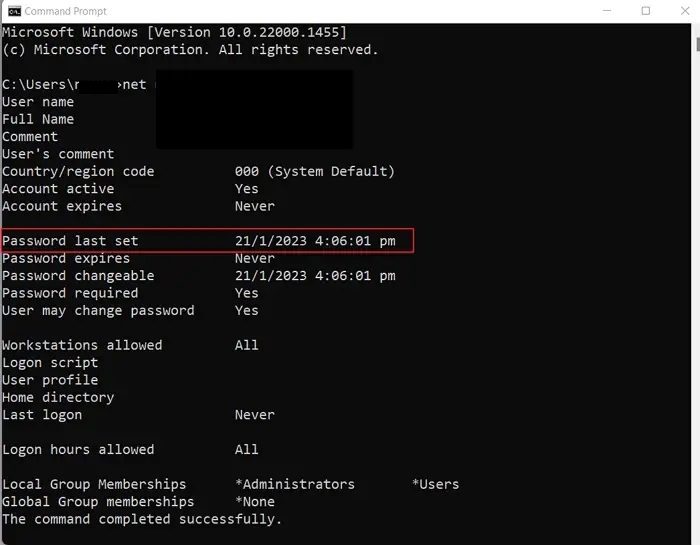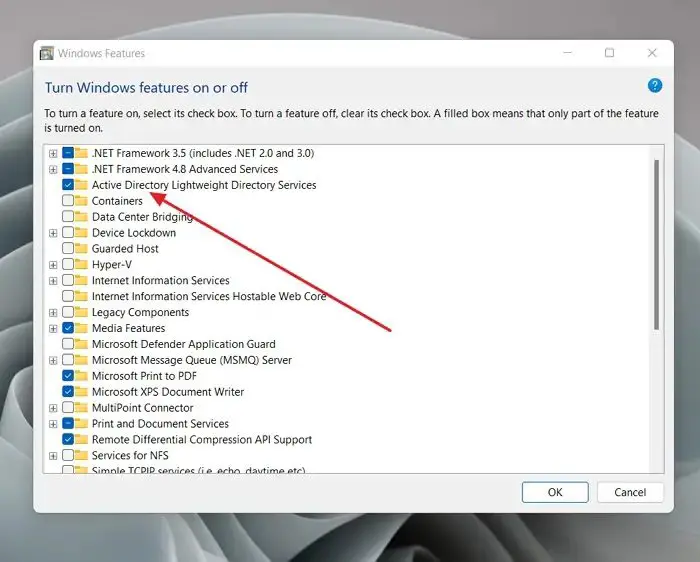Knowing when you changed your Windows password is helpful. Maybe, you have a habit of changing your password occasionally to keep your PC secure. Or maybe your PC is used by multiple users, and you are worried that someone has changed the password. The reasons could be many, but the question is how to check the last Password change. Well, it is a relatively straightforward process with the help of commands on CMD or Windows Terminal, or PowerShell.
How to check Last Password Change in CMD or PowerShell
There are two ways to find out the previous password:
- CMD or Windows Terminal
- PowerShell
Since it is related to your account, you don’t need an administrator account.
1] Using CMD

Checking the last password change using CMD has to be the easiest method as It offers you the Net user command. The commandlet allows you to manage user accounts and groups. Using this method, you can check your last password change and any other users on your PC (with an admin account)
- Open Command Prompt
- On the command prompt, run the following command (make sure to replace %username% with the respective username):
net user %username%
- Once done, the CMD should display the date as Password last set
- Alternatively, if you have logged onto a domain-joined PC, then you can check for the last password change using the following command:
net user %username% /domain
- Make sure to change %username% and domain to their respective details.
2] Using PowerShell
PowerShell is the only solution to check your last password change on a Windows server. However, the Windows server requires you to have the Get-AdUser cmdlet from the Active Directory module installed.
Without installing the cmdlet, you would encounter an error. You can install the cmdlet by running the following command on PowerShell:
Install-WindowsFeature RSAT-AD-PowerShell
Note: The above command only applies to the Windows Server operating systems. Suppose you are using a client operating system such as Windows 10 or 11; in that case, you need to install the Remote Server Administration Tools for Windows 10 (RSAT) and then enable the Active Directory Lightweight Directory Services module in the “Turn Windows features on or off” dialog box.

Once you have the cmdlet installed, run the following command to check your last password change using PowerShell:
Get-ADUser -Identity %username% -Properties PasswordLastSet | Select-Object Name, PasswordLastSet
Make sure to change the username to the respective server username.
Conclusion
So those were two quick ways to check the last password change in a Windows or Server OS. If you are using a PC, going with a CMD command is ideal and easy. But for server users, the PowerShell command should work just fine.
How do I find my password change history?
If you are using Active Directory, you can enable the auditing for password changes. It is available at Default Domain Policy > Computer Configuration > Policies > Windows Settings > Security Settings > Local Policies > Audit Policy: Audit account management. Check both Success and Failure. Next, you can set Event Viewer to accommodate all the password changes.
Where does Windows store password history?
Like any other password manager, Windows does not store passwords; it stores hashes, which are not humanly readable. Windows stores hashes of all passwords and is stored in the local Security Accounts Manager (SAM) database in Active Directory.
Leave a Reply